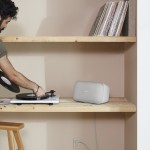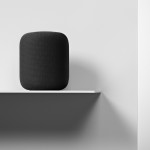size =gallery size =gallery size =gallery size =gallery size =gallery size =gallery size =gallery size =gallery size =gallery size =gallery size =gallery
1 of 11 Courtesy of Amazon
Starting from the Speaker
Maybe you got a smart speaker as a gift, or finally took the plunge and bought one for yourself. Whichever one you chose, now that you’ve got a smart assistant in your home, one of the best ways to take full advantage of its skills is to get more smart home gadgets that work with it. From Amazon’s Alexa to Google Home to the newer Apple HomePod, we’ve taken a look at some of the best tech to pair with these speakers, and asked some experts how to take full advantage of their smart home capabilities.
2 of 11 Courtesy of Amazon
Amazon’s Alexa
When the Amazon Echo launched in November 2014, it was impossible to expect how it could bring an accessible smart home to the masses. Amazon has used Alexa Skills to add more and more devices to its ecosystem since its inception, and today the assistant boasts over 15,000 skills that allow it to integrate with everything from smart lights and switches to smart vacuums and faucets. Alexa is also available in a number of models. The second generation Amazon Echo ($99.99) comes with a range of colors, including wooden finishes and soft fabrics (pictured above in Heather Gray), while the tiny Echo Spot ($129.99) makes for a great piece in a small space and features a screen to boot. Or, you can focus more on sound quality and get a Philips Hue hub built in with the Amazon Echo Plus ($149.99).
More Videos From Sunset
3 of 11 Courtesy of WeMo Belkin
Alexa: Starter Combo
Alexa has so many skills and wide compatibility that picking products to pair with it is hard to get wrong. If you’re looking for a product category to start with, Steve Koenig, a senior director at the Consumer Technology Association, recommends smart lights and plugs. “Connected outlets with voice control are [sic] big,” Steve says. “You can plug anything into them, like a lamp, curling iron, or holiday lights—plus they’re usually inexpensive and easy to set up. Additionally, WiFi cameras and smart light bulbs are big smart home sellers—sometimes you’ll find smart home bundles with a connected light bulb that you can control with your voice.” Alexa works great with smart bulbs like Philips Hue (two for $49.99), especially if you’ve got the Amazon Echo Plus; the Philips Hues can be added to any standard light fixture. Alternatively, pair Alexa with a smart outlet like the WeMo Mini Smart Plug ($22) to control a light from the base (especially if it’s got a specific-sized bulb).
4 of 11 Courtesy of SONOS
Alexa: Next-Level Pairings
If you really want to have fun with adding devices to your Amazon Echo, look for ones that will only work when Alexa calls. A favorite is from Sonos, which has launched its speaker the Sonos One ($199) that has Alexa built in. There’s also the Sonos skill, which allows your Echo device to control any Sonos speaker already in your home. Or, focus on cleanliness with Dyson’s Alexa skill, which lets you voice control its WiFI-controlled purifiers like the Pure Hot Cool Link ($637) and its smart vacuum, the Dyson 360 Eye ($1,500).
5 of 11 Courtesy of Google
Google Home
The Google Home ($99) arrived to the masses at the end of 2016, and Google has already launched both a miniature version, the Google Mini ($49), and a large speaker edition, the Google Max ($299). From the get-go, Google’s smart speakers have stood out for their variety of colors and design features like changing the volume by simply touching the device. They’re all paired with Google’s Home app, but the smarts come from Google Assistant (a separate app you’ll also need to download) inside the speakers, which taps its intelligence from the search engine so well-used that’s become a verb. Devices and technology pair with the Assistant, and then can be controlled through the speakers. And Google Assistant works with more and more devices the longer it’s been out on the market.
6 of 11 Courtesy of Nest
Google Home: Starter Combo
Consider Nest (also owned by Google), best known for its smart thermostat and now the maker of a huge range of smart home security devices. The company’s new security suite, aptly named Nest Secure (starter pack $380), comes with a base station, window/door monitors, and key fobs. Nest’s latest thermostat, the Nest Thermostat E ($233), has an e-paper screen and ceramic exterior that make it blend seamlessly into your home, and puts it at a more affordable price point. If you don’t have one already, the Consumer Technology Association has found connected thermostats as a top wish list item for homeowners with a smart assistant.
7 of 11 Courtesy of Samsung SmartThings
Google Home: Next-Level Pairing
If you’re a Samsung SmartThings user, you’re in luck—Google Home is compatible with the SmartThings Hub ($64), allowing you to continue controlling devices through SmartThings with the added voice control of Google (this integration can be done with Alexa, too.) This integration enables Google Home to work with the myriad devices on the Works With SmartThings network, which has been managing smart home gadgets since 2012.
8 of 11 Courtesy of Apple
Apple’s HomePod
It’s finally here: Apple’s long-awaited HomePod ($299). It’s a speaker first, and smart assistant second, powered by Siri and Apple’s smart home hub HomeKit. It’s also the newest kid on the block when it comes to the smart speaker world, and in some ways it’s easy to tell.
9 of 11 Courtesy of Apple
HomePod: Starter Skills
While the HomePod is focused on high-quality sound, you’ll need to be an Apple Music listener in order to voice command your sound. If you’re primarily on third-party platforms like Spotify, you can still use that with HomePod, but you’ll have to activate it with AirPlay from your phone instead of with your voice. Nevertheless, Siri on HomePod makes for a good DJ, able to choose music with commands as simple as “play something I like.” You can also use Siri on HomePod to send an iMessage. And, if you receive a response within ten minutes of asking Siri to send a message, you’ll hear a ding from the HomePod and will get the option to hear the message. The time limit means that your HomePod isn’t trying to notify you about every message you get at any hour of the day but only the responses to what you just sent using your HomePod.
10 of 11 Courtesy of Eve Elgato
HomePod: Starter Combo
When it comes to compatibility with other devices, HomeKit, and in turn, Siri and HomePod, is more limited than the other smart assistant players, which means tread carefully when shopping. But the products work nicely enough (especially with the Home app on an iPhone, and the Home shortcut you can add to an iPhone control panel) to make it worth it. There are some smart home gadgets that only work with HomeKit, like Eve Elgato. Eve’s suite of room sensors can do everything from tell you a specific room’s temperature ($49) to sense when a window is open ($39.93), and the company makes smart outlets ($42) as well. In the past, to connect to these devices without your phone nearby required an Apple TV to act as a hub. Now, HomePod can be a smart home hub for these devices, allowing you to control them with the Apple Home app no matter where you are.
11 of 11 Courtesy of August
Mix and Match
You don’t always have to choose from a limited list of integrations, though. Plenty of smart home devices work with not just one, but even all three smart speakers. “Right now, the different speakers on the market are building ecosystems,” says CTA’s Koenig. “Not surprisingly, each major manufacturer of these smart speaker devices—Amazon, Google and Apple—has its own capabilities and partnerships, although many overlap as well, like August smart locks, Philips Hue products, and Belkin’s line of devices.” August, Philips Hue, and Belkin are great places to start for a smart home that won’t be defined by the smart speaker you choose, allowing you to mix it up in the future (or even in different rooms of your home). Keep in mind, though, that gadgets could still work differently depending on the smart speaker they’re paired with.












